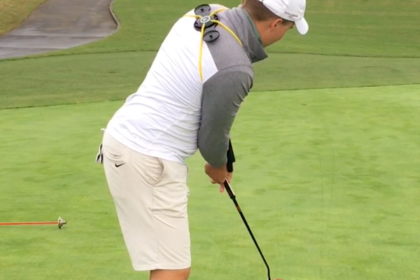Your Cart is Empty
STANDARD AND EXPRESS SHIPPING WORLDWIDE!
STANDARD AND EXPRESS SHIPPING WORLDWIDE!
STANDARD AND EXPRESS SHIPPING WORLDWIDE!
November 06, 2021 2 min read

This article is co-written with Zach Parker. Zach is the former director of golf at the Gary Gilchrist and Bishop’s Gate golf academies. Zach is a golf coach, an expert in skill acquisition, and he has years of experience setting up effective training scenarios for golfers of varying abilities.
In Part 1 of this article, we discussed in detail how and why we should shift our focus from practicing to training. Specifically, making training more “game like” by incorporating the following three principles
For more detailed insight to this topic, check out the podcast that Zach recently recorded with Game Like Training Golf
This is with the aim of avoiding the following frustrations that occur when training is performed poorly
In Part 1 we covered long game, and in Part 2 it’s time to address putting. Training this crucial part of the game is often overlooked and almost always performed poorly with very little intent. On course, we never hit putts from the same distance (unless you’re in the habit of missing two footers!), yet when practicing its common to repeatedly hit putts from the same place. Our length of stroke, reaction to speed and slope and time between putts are constantly changing on course, so it would make sense to replicate that in our training right?
In the practice circuit below we have incorporated spacing by leaving large gaps between putts, variability by mixing up the tasks and challenge point by introducing hurdle tasks that must be completed before moving on to the next station.
Learning task: Three rehearsals with a specific focus, in this case, using the GravityFit TPro to bring awareness to posture and arm-body connection.
Completion task: Must make putt from 6 feet, downhill, left to right-to-left break.
Learning task: Three rehearsals with specific TPro focus; in this case posture for eye-line and using bands for arm-body connection.
Completion task: Must two-putt from 30-40 feet, uphill. Add drawback to five feet for more difficulty.
Learning task: Three rehearsals with specific TPro focus again.
Completion task: Must two-putt from 20-30 ft, right to left break. Add drawback to five feet for more difficulty.
You can either have a go at this circuit or create your own. There are no set rules, just make sure to include a mixture of tasks (variability) that are appropriate to your level of ability (challenge Point) with plenty of time between repetitions (spacing).
For more information on the featured GravityFit equipment, click here



Sign up to get the latest news on products, exercises, drills and more …